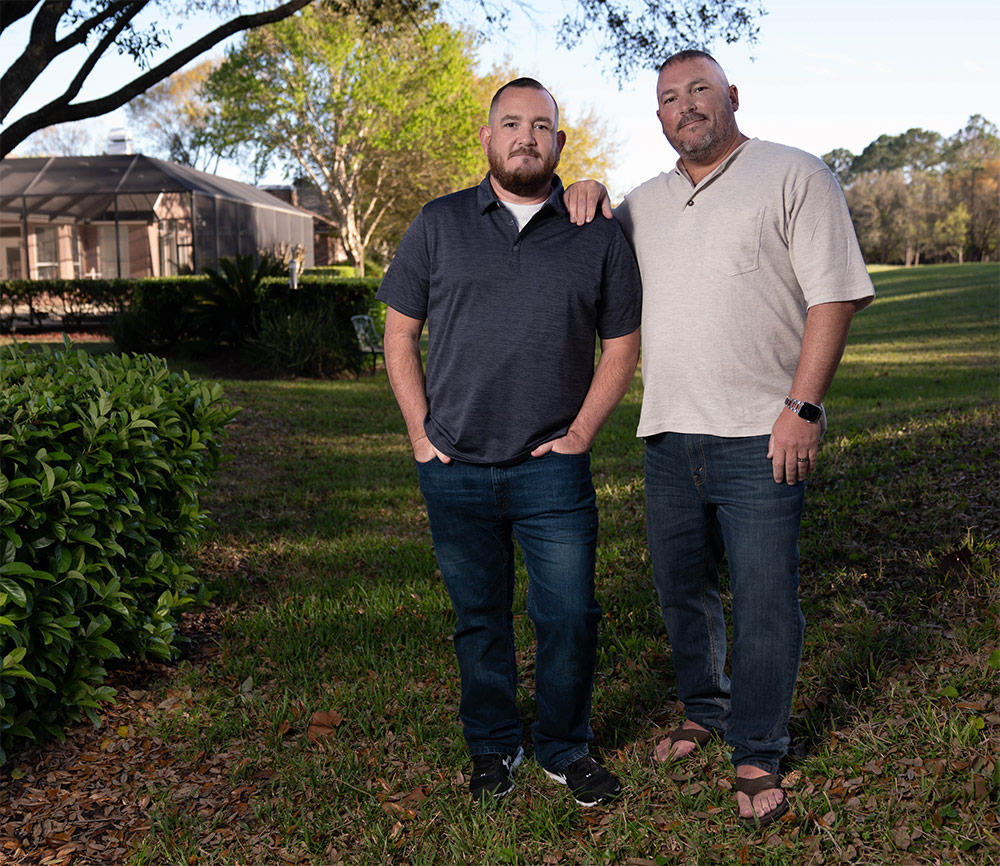Out in the Open


Matt beams with pride when he talks about his stepson and stepdaughter. Both currently serve in the military, like he did years ago. Matt’s steadfast commitment to supporting the warfighter shines through as a father, a veteran and his work as a project manager for Northrop Grumman. But his professional life was not always perfect, especially as a gay man starting a military career during the era of the former Department of Defense policy “don’t ask, don’t tell” (DADT).
Hiding in Plain Sight
Raised in rural Mississippi during the 1990s, Matt came out at the age of 19. He was fortunate to be accepted by his parents. “It was far from guaranteed, given the location and time,” said Matt. He was excited to carry on his family’s tradition of service when he enlisted in the Air Force in 1998. Years earlier, DADT had passed, prohibiting military personnel from sharing or asking about sexual orientation and barring openly LGBTQ+ persons from military service. Despite accepting Matt for who he was, his father urged him “not to be publicly gay” prior to entering basic training out of concern that he would be discharged.
Matt was a rising star, earning volunteer and mentoring awards. Despite his success, keeping up the facade of being straight made Matt feel increasingly isolated and anxious.
While having dinner with a fellow airman in 2000, he let slip that he found another man attractive. Within hours, Matt found himself handcuffed and being read his Miranda Rights. Less than seven days after admitting he was gay to his superiors, Matt was administratively separated from the Air Force. “It felt like all of my accomplishments meant nothing,” he said.
Matt returned to Mississippi and attended college there, and later met his future husband, David, a hospital corpsman in the U.S. Navy.
Living a Lie
When Matt joined Northrop Grumman in 2006, he had the opportunity to support his country once again. However, his past experience haunted him, even though society was changing and DADT would soon be repealed, in 2011.
As a military spouse, Matt moved with his husband around the U.S. before they settled in northwest Florida. He was able to continue working at Northrop Grumman in St. Augustine, but he continued to keep his sexual orientation and relationship a secret. He still felt uncomfortable being out in the open, especially at work.
2015 was the turning point. The stress of living a lie broke the secrecy dam within him, and he felt he had to take action. Matt went straight into his then-manager’s office.
“I felt so defeated,” he said. “I sat down and began this emotional outpour of everything I was feeling.” His manager, John — a veteran himself — jumped to action to ensure Matt felt supported and worked in an inclusive environment.
“For him [John] to tell me it was okay to be myself and to be honest about my identity without concerns something negative would happen was an unexpected feeling,” said Matt.
John also introduced Matt to the Pride in Diversity Alliance (PrIDA) employee resource group, further altering his workplace journey.
Out, Finally
Re-energized, Matt made a quick transition to sharing his authentic self at work. He proudly displayed photos of his family on his desk. He felt empowered to excel, and is currently pursuing a role in state politics.
“The last six years of being out have given me a new level of strength and courage,” he said. “I don’t hide anymore.”
Now the enterprise lead for the PrIDA employee resource group, Matt’s story reveals how important it is to create a culture where everyone feels safe to be themselves.
“Our efforts as an organization hold a much larger impact beyond the nine-to-five work day, and I believe a big part of my success has been due to Northrop Grumman’s efforts forging a way forward for inclusivity in our industry,” Matt said. “We need to quit saying, ‘It’s going to be better,’ and just make it better today. We all have the power to make this possible now.”
Life at Northrop Grumman
Your work at Northrop Grumman makes a difference. Whether you want to design next-generation aircraft, harness digital technologies or build spacecraft that will return humanity to the moon, you’ll contribute to technology that’s transforming the world. Check out our career opportunities to see how you can help define possible.